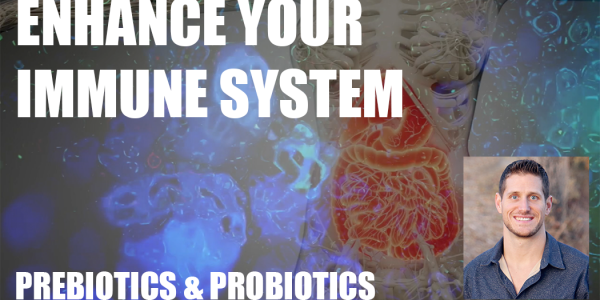WHAT IS THE IMMUNE SYSTEM?
Our immune system is critical for humans to survive and thrive. Without an immune system, we would be crippled by the devastating attacks from bacteria, viruses, parasites, and more. It is our immune system that keeps us healthy as we live in a sea of chemicals and pathogens.
This incredible system of cells and tissues is constantly on the lookout for invaders, and once an invader is spotted, a comprehensive and co-operative defense is mounted.
The immune system is spread throughout the body and involves many types of cells, organs, proteins, and tissues.
If the immune system encounters a pathogen, for instance, a bacterium, virus, or parasite, it creates an immune response.
DIFFERENT TYPES OF LYMPHOCYTES
One type spots the antigen and then starts to make antibodies to protect the body.
Other types help coordinate the immune response.
And another type helps to kill the invaders.
LEUKOCYTES
Leukocytes (white blood cells) are immune system cells involved in defending the body against infectious disease and foreign materials. Five different types of leukocytes exist, all produced and derived from a multipotent cell in the bone marrow known as a hematopoietic stem cell.
LYMPHATIC SYSTEM
The key primary lymphoid organs of the immune system include the thymus and bone marrow, as well as secondary lymphatic tissues including spleen, tonsils, lymph vessels, lymph nodes, adenoids, skin, and liver.
The lymphatic system is a network of tissues and organs that help rid the body of toxins, waste and other unwanted materials. The primary function of the lymphatic system is to transport lymph, a fluid containing infection-fighting white blood cells, throughout the body.
Lymph nodes cleanse the lymph fluid. They help swallow up bacteria and viruses.
After cleansed, enters back into the blood stream.
Lymph nodes Also contain Tcells and Bcells – antibodies and cancer killing cells get carried to the blood stream to get distributed to the rest of body.
Lymph fluid is comprised of = reclaimed fluid from the bloodstream that is drained into the lymph vessels, along with any pathogens or damaged cells that need to be removed. Loose cancer cells are also picked up in this process.
The lymph vessels act as a filtration system, separating pathogens while the lymph nodes activate antibodies in the bloodstream.
YOUR GUT AND IT’S ROLE IN THE IMMUNE SYSTEM
The gastrointestinal system plays a central role in immune system homeostasis. It is the main route of contact with the external environment and is overloaded every day with external stimuli, sometimes dangerous as pathogens (bacteria, protozoa, fungi, viruses) or toxic substances, in other cases very useful as food or commensal flora. The crucial position of the gastrointestinal system is testified by the huge amount of immune cells that reside within it. Indeed, gut-associated lymphoid tissue (GALT) is the prominent part of mucosal-associated lymphoid tissue (MALT) and represents almost 70% of the entire immune system; moreover, about 80% of plasma cells [mainly immunoglobulin A (IgA)-bearing cells] reside in GALT. GALT interacts strictly with gastrointestinal functions in a dynamic manner; for instance, by increasing intestinal permeability in replay to particular stimulations, or orientating the immune response towards luminal content, allowing either tolerance or elimination/degradation of luminal antigens, or sometimes provoking damage to the intestinal mucosa, such as in coeliac disease or food allergy.
LYMPH NODES IN GUT
Aside from all of its other functions, the gastrointestinal tract is a lymphoid organ, and the lymphoid tissue within it is collectively referred to as the gut-associated lymphoid tissue or GALT.
The Gastrointestinal System
The gastrointestinal system begins with the mouth, leading to the esophagus and extends through the stomach, small and large intestine to the anus. Food is digested in the stomach and nutrients absorbed in the small intestine. The pancreas, liver, and gallbladder are also parts of the gastrointestinal tract.
The gastrointestinal system consists of the gastrointestinal tract and the gastrointestinal glands.
Probiotics – Our gut microbiota contains tens of trillions of microorganisms, including at least 1000 different species of known bacteria with more than 3 million genes (150 times more than human genes). Microbiota can, in total, weigh up to 2 kg.
The root of the word probiotic comes from the Greek word pro, meaning “promoting,” and biotic, meaning “life.”
There are roughly 40 trillion bacterial cells in your body and only 30 trillion human cells
Anti-biotic – means anti-life
Probiotics help with digestion and immune system function, communicating with immune cells to prevent and fight disease.
Prebiotics – fermentable fibre. Feeds good bacteria.
Prebiotics are naturally present in vegetables and fruit such as garlic, onions, leeks, asparagus, artichokes, tomatoes, bananas, plums and apples; in grains and cereals like bran, and in nuts like almonds. For this reason, vegetables, fruits and cereals should be part of a balanced and healthy diet.
Chicory Root
Dandelion Greens
GARLIC
ONIONS
ASPARAGUS
BANANAS
BARLEY
OATS
APPLES
BURDOCK ROOT
FLAXSEEDS
SEAWEED

Leave A Response